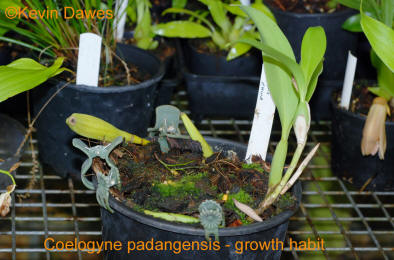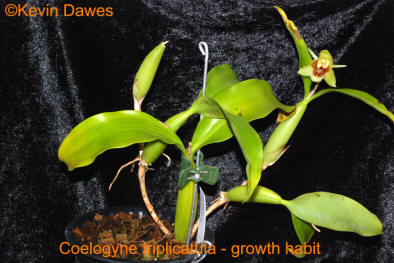You can divide your plants at any time if you have to but it is always better to pick a time when your plant is growing very actively. At this time it will grow new roots more quickly and have less risk of rotting in a stagnant pot. This is normally during Spring or Autumn but in the Tropics or in a glasshouse this could be most of the year.
Taking a piece of an existing plant to make a new plant guarantees that the flowers will be the same as the parent as it contains all of the same genes. Getting a new plant from seed does not guarantee getting the same plant as the parent because the gene mixture could be different. The new method of mericloning takes a tiny piece of cell tissue from a desirable plant and making its cells divide over and over again until there are thousands of new plants the same as the original plant. Laboratories in places such as Thailand are mass producing new and rare orchids and at prices that anyone can afford.
The bigger the chunk of plant that you take to repot the more likely it is to be successful. The smallest piece that would normally be taken would be a piece with four psuedobulbs. These ideally should be fat and healthy as they are going to supply food for the new plant for a long time until it has grown enough new roots and shoots to feed itself. Because the new plant doesn't have active feeding roots after you divide it there is no point in adding fertiliser. It is only the very delicate new tips on the root that absorbs food. Some growers apply mild plant hormones to encourage new growth but this is sometimes controversial.
Because the new plant has suffered a trauma it needs to be given extra care to encourage new growth. This involves more moisture/humidity, a smaller range of temperature and more gentle light. This could involve using a glass cabinet, a large plastic bag or a more protected part of the glass house. It should be consistent care. If it gets perfect conditions for three weeks and then gets one horrible day of dryness, heat or some negative then much of what it has gained over the last three weeks is lost and the plant has to start rebuilding itself all over again. It will try this several times but will eventually die as it runs out of its reserves.
Because the new growing tissue is made up of micro sensitive cells it is essential that they are protected. If the new plant can wobble around in its pot the tiniest bit because of breezes blowing on it, for example, these new cells will be damaged and die as fast as they grow. Use clips, tape, wire or whatever to keep the plant very stable.
Rambling plants, or ones with a large space along the rhizome between psuedobulbs are often planted on long pieces of wood or bark. These can dry out extremely quickly and need great care keeping the humidity at a high level around them. The image above shows a technique of curling these around a pot. Note the clips used to stabilise the cutting and keep it in contact with the potting media.
If mounting the new cutting on a piece of wood, bark, stone or whatever place a handful of a good moisture retaining media such as spaghnum moss on the chosen base. Next spread the cutting on top of that and then wind string or wire etc. around the whole lot to hold the plant firmly against the mount. Find it a moisture friendly sight out of drying draughts. You may need to mist it very frequently for several weeks. If it dries out it will not grow new roots. Refer to the notes on watering and media.
| < Back to General Cultivation | Fertilising > |

